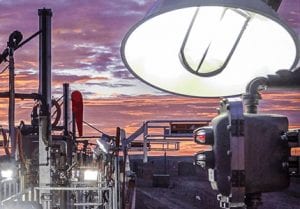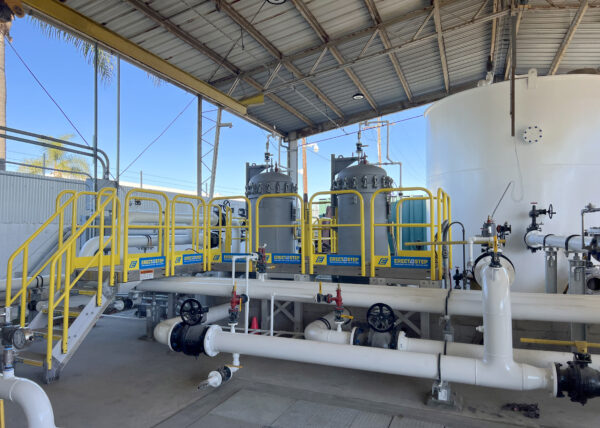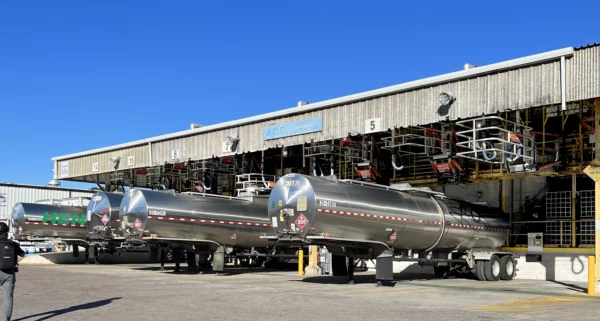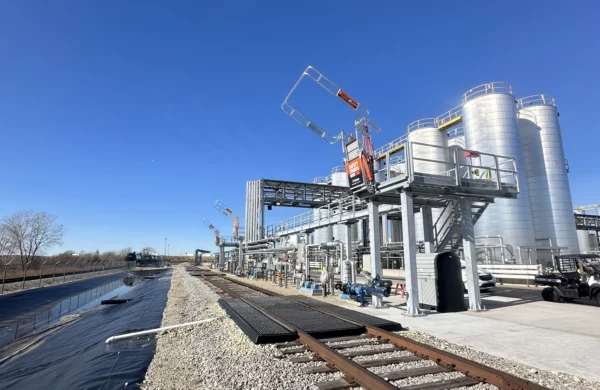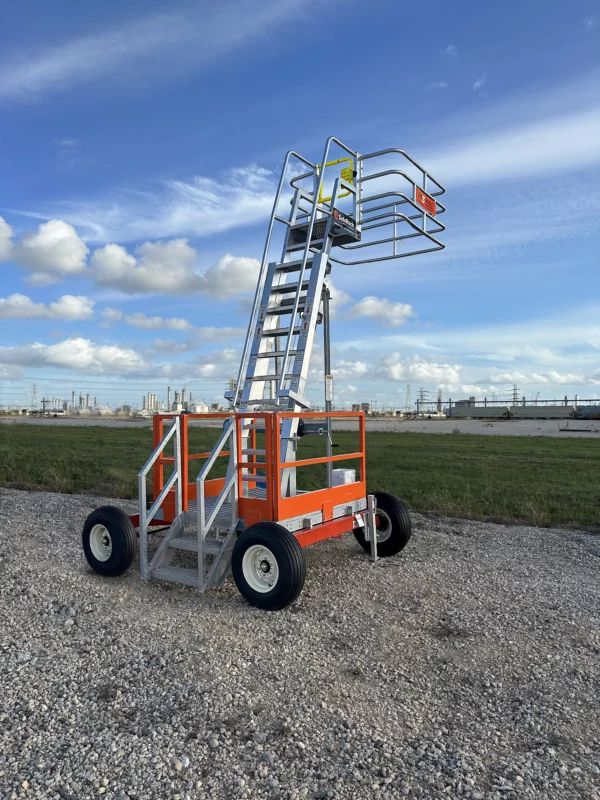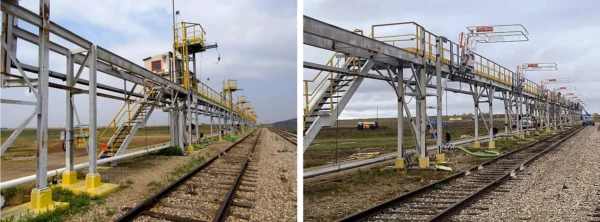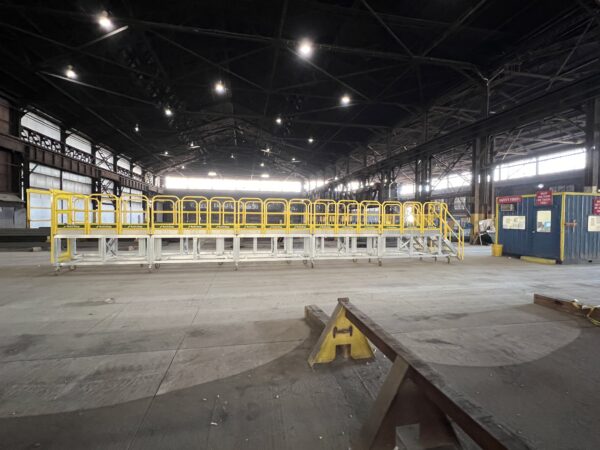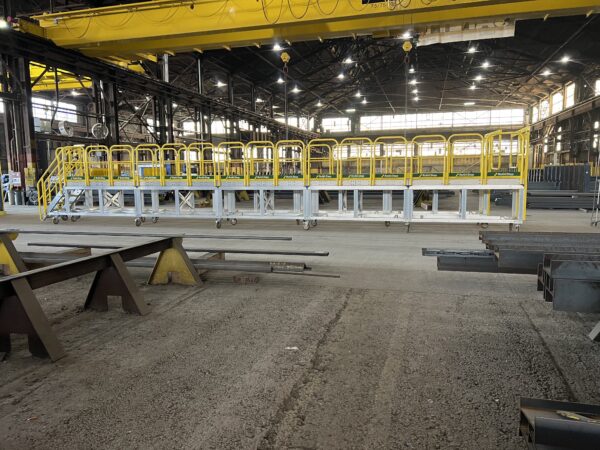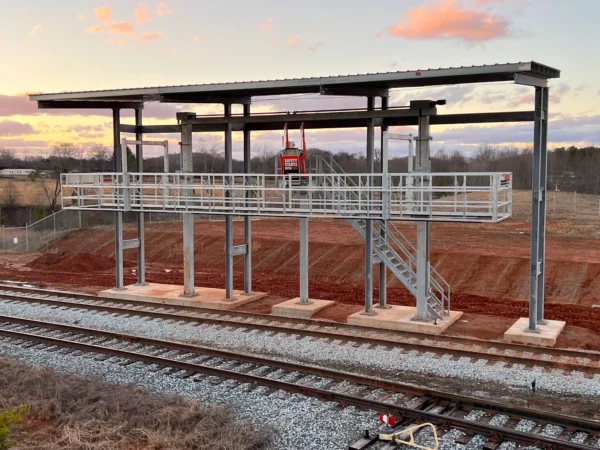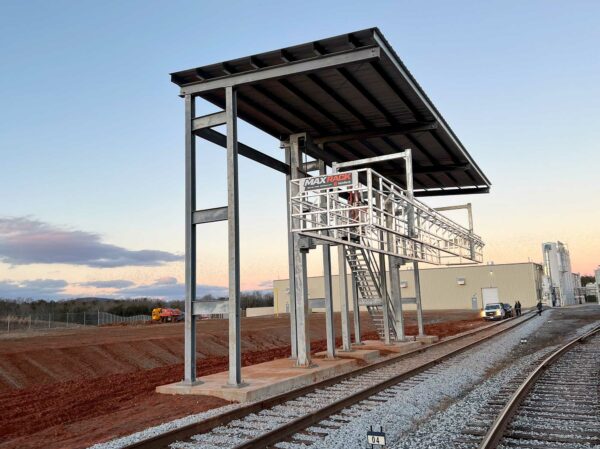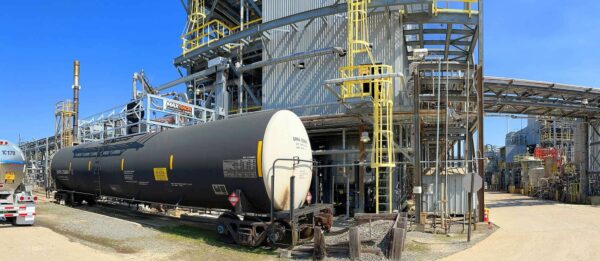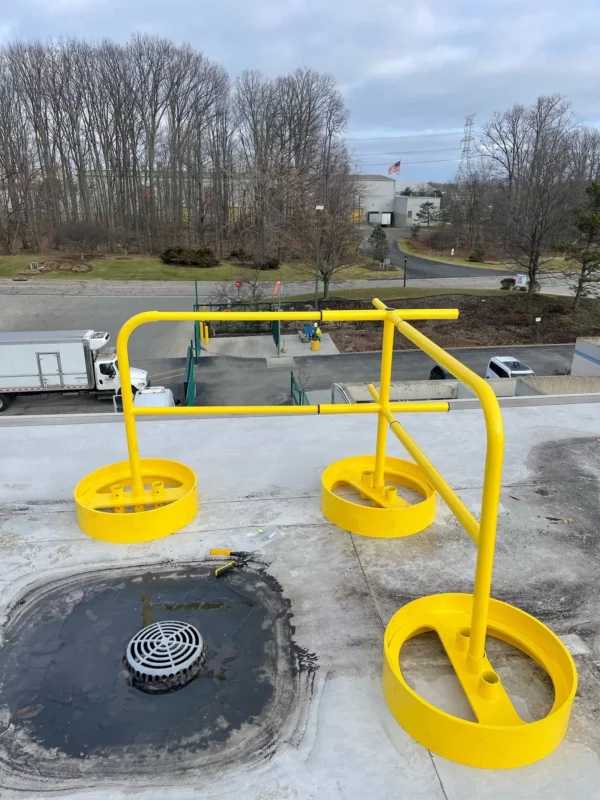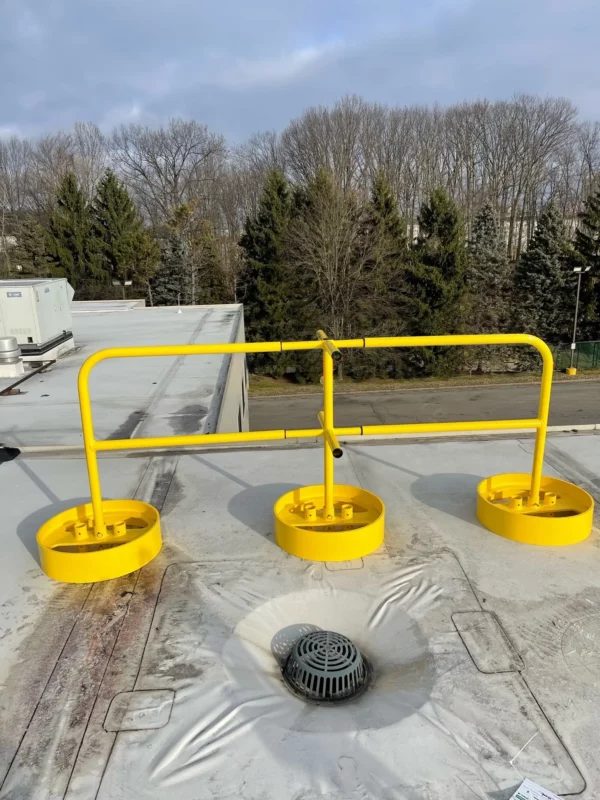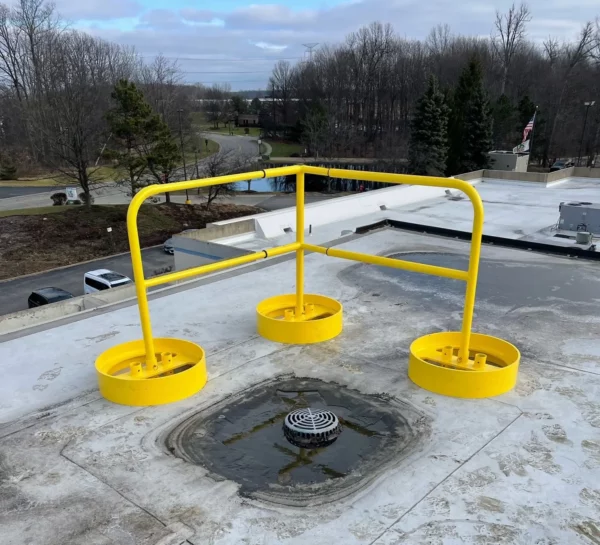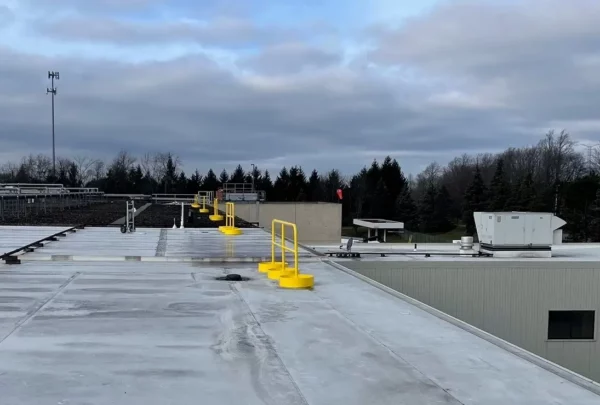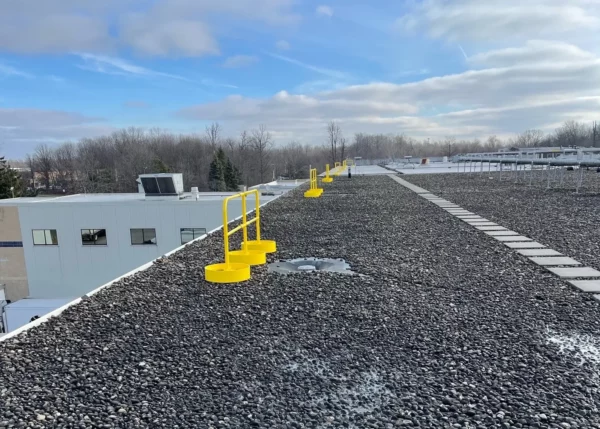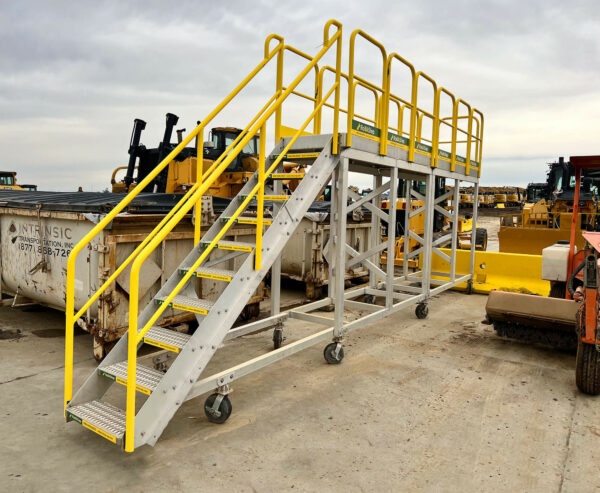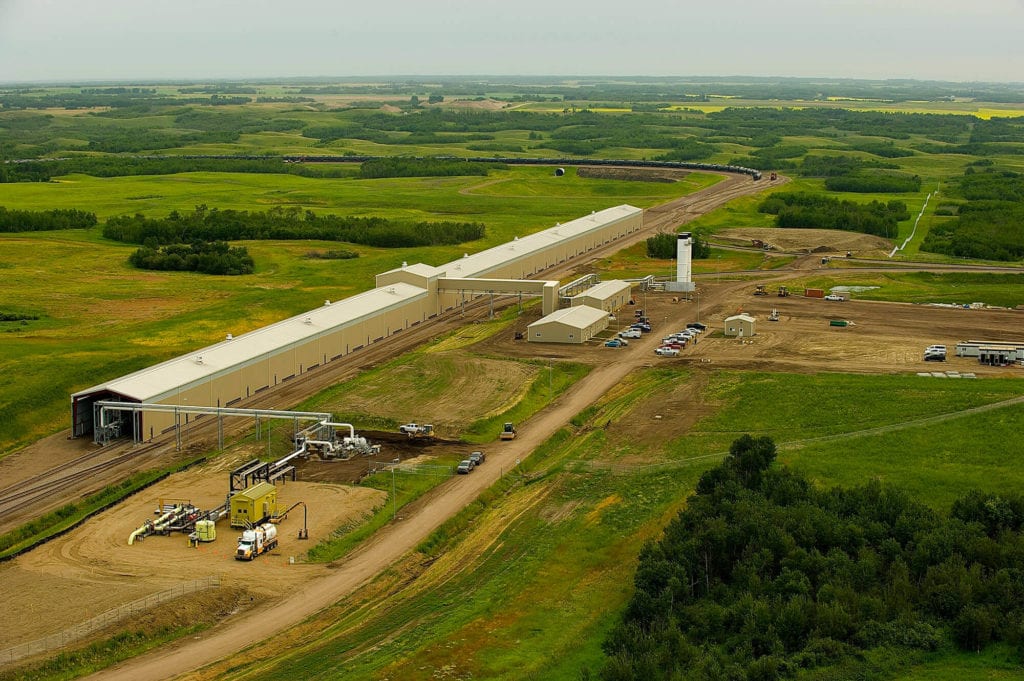Get a quote, configure a custom safety solution or ask a question. We're here to help!








- Spill ContainmentMore …Loading Safety CagesMore …
SafeRack Worldwide
We pride ourselves on one-on-one customer service. When you call SafeRack, we'll be there to answer your questions with a combined experience of 400+ years.
Select your region below.- View Products
- Railcar & Truck Loading Platforms
- Gangways & Loading Ramps
- Stairs, Platforms & Ladders
- Mobile Ladders & Platforms
- Loading Arms & Fluid Transfer
- Safety Gates & Traffic Control
- Aviation & Aerospace Access
- Marine Access & Loading
- Grounding & Monitoring
- Spill Containment
- Loading Safety Cages
- Transloaders & Skids
- Shelters & Canopies
- Fall Protection
- Terminal & Speciality
Home / Industries / Bulk Chemical Loading / Hypochlorous AcidHypochlorous Acid (HOCl) Handling Design, Loading & Installation
Hypochlorous acid loading solutions must take many factors into consideration to ensure optimum safety and productivity are prioritized in the best interests of your business and the people who work there.
What is hypochlorous acid?
Hypochlorous acid, also referred to as electrolyzed water (EW), is a weak acid that forms when chlorine dissolves in water and partially dissociates forming hypochlorite. It contains 5.25% sodium hypochlorite (NaOCl) which is a very strong oxidizer for bleaching textiles and is effective in cleaning stains and killing microorganisms such as bacteria and molds. It is important to note that hydrochloric acid (HCl) completely dissociates in an aqueous solution, resulting in a strong acid.
In the United States, hypochlorous acid is a “tight-fill” (closed-loop) loading and unloading operation and is loaded into rail cars via chemical hoses or 3” stainless steel loading arms. If not handled properly, hypochlorous acid can cause serious injuries and personal protective equipment (PPE) is required. Additionally, because operators are on top of the vehicles during the loading process, a high-quality, well-designed fall prevention plan is essential to ensure increased throughput without compromising operator safety.


















Question, Get a Quote, Live Demo or Request an On-Site Visit
Our experts simplify the complex
View Full TextHSA is typically shipped in 26,000 gallon DOT-103 rubber lined, insulated or non-insulated tank cars with safety valves. The rails cars themselves are ~ 9′ outside diameter with an overall length of ~45’ to 50′, with a 6’ x 6’ center opening or off-set crash box openings.
Typical Hypochlorous Acid Loading Platform
Quote or discuss your installation.
Start by selecting loading application"*" indicates required fields
Below are some of the loading and unloading solutions for illustrative purposes only. Our experts will work with you and your team for a custom solution to suit your needs.
Hydrofluorosilicic Acid Loading

Hydrofluorosilicic acid is typically loaded into railcars or tank trucks via boom supported PTFE lined loading arms or chemical hoses with flanged end connections. The arm or hose will have a top inlet with a control valve to ensure that it is self-draining after use and is supported along the length of a mechanical loading arm to improve handling; this is known as a by-pass arm. You can install one liquid and one vapor arm, or mount both the liquid and vapor hoses on one by-pass arm. For unloading, typically you would use a rigid self-draining PTFE lined loading arm with EPDM, Fluorcarbon, Nitrile, or PTFE seals. Purge lines can be fitted to the arm, for nitrogen purging. Additional features such as parking latches with proximity sensors can be incorporated into the total system to ensure the arm is correctly stowed when not in use, before any rail movement can occur.
Loading Gangways and Safety Cages

A wider access gangway (36″-48″ is preferable) as it helps improve access and egress to and from the vessel. In addition, a wider gangway will reduce the risk of the operator’s PPE getting caught, torn or damaged, and will improve productivity and safety. Powered gangway solutions are also an option, with both hydraulic and pneumatic solutions being commonly used. Each gangway will be fitted with a two-rail safety cage for the railcar crash box. This will be a centered 6’x6’ safety cage to sit directly over the cashbox. This will provide a safe, secure work environment for your operator when connected to their breathing apparatus

SafeRack’s GX SAS gangways use Retractalok power-assist technology allowing operators to raise or lower effortlessly, light as a feather to lift, and solid as a rock. Tested in the most critical applications, this revolutionary new gangway outperforms all others. Available in multiple lengths and widths.
Learn MoreMAXRack Elevating Safety Cage
 As an alternative to our two and four-rail safety cages, some customers prefer our MAXRack elevating safety cages. The ultimate fall prevention solution engineered to keep operators safe and productive. Designed for both trucks or railcars, and available in multiple cage lengths and widths. Safe, durable, and easy to use. MAXRack is built rock-solid with galvanized steel column supports and lifting arms (cages can be Aluminum, Galvanized, or Stainless Steel depending on application) Available in two power options – Pneumatic Air Drive and Electric Drive (Explosion and Non-Explosion Proof).
As an alternative to our two and four-rail safety cages, some customers prefer our MAXRack elevating safety cages. The ultimate fall prevention solution engineered to keep operators safe and productive. Designed for both trucks or railcars, and available in multiple cage lengths and widths. Safe, durable, and easy to use. MAXRack is built rock-solid with galvanized steel column supports and lifting arms (cages can be Aluminum, Galvanized, or Stainless Steel depending on application) Available in two power options – Pneumatic Air Drive and Electric Drive (Explosion and Non-Explosion Proof).
Learn MoreHydrofluorosilicic Acid Eye Wash/Drench Showers

ANSI guidelines state that an Eye Wash/Drench Showers need to be located 10 seconds or 55’ (16.8m) from contaminants or hazardous materials. Eyewash stations need to be on the same horizontal plane with no obstructions.
Therefore, we would propose the installation of a standard combination Drench Shower/Eyewash Unit, which will save limited space and fit easily into any work environment.
Hydrofluorosilicic Acid Spill Containment

Spill containment pans will be provided at the point of loading operations and is an essential piece of equipment in overall site safety and environmental protection. Hydrofluorosilicic Acid Grounding

Hydrofluorosilicic acid is not a combustible or flammable material; however, industry best practice includes the grounding of all vessels before starting the (un)loading process. - Ground controllers — ensure true grounding before product flow is permitted
- Explosion-proof enclosures — meet or exceed UL, CSA and Ex requirements
- Non-sparking tools are also recommended while working around this product
Hydrofluorosilicic Safety Gates

Safety Gates will be installed at the top of stairs and any other openings to ensure operator safety at all times.  YellowGate Safety Gates
YellowGate Safety GatesSafeRack’s line of industrial safety gates is the most flexible product on the market with the ability span openings between 16” and 36” and is field adjustable with nothing more than a wrench. Learn More
Hydrofluorosilicic Acid Options

- Lighting – Lighting both over and under the platform will be provided. For overcast days or second shift, lighting is essential for improved safety and improved productivity.
- Platform & Canopies – Full platform canopies reduce exposure to the elements and improve the safe and productive loading operation from the operator’s perspective.
- Operator Shelter – Depending on your site requirements, consideration should be given to the requirement of an operator or guard building on the loading platform. This can be customized to meet specific site requirements
- Wheel Chocks – Railcar Wheel Chocks provide fast blocking of all types of railcars and meet OSHA regulations to safely prevent railroad cars from moving during loading or unloading operations. This is a requirement by the Department of Homeland Security
Personal Protective Equipment PPE Requirements
Eye/Face Protection: Wear chemical safety goggles. A face shield (with safety goggles) may also be necessary.
Skin Protection: Wear chemical protective clothing e.g. gloves, aprons, boots. Coveralls or long sleeve shirts and pants in some operations. Wear a chemical protective, full-body encapsulating suit, and self-contained breathing apparatus (SCBA). Suitable materials include: butyl rubber, neoprene rubber, Viton®, Viton®/butyl rubber, Barrier® – PE/PA/PE, Silver Shield® – PE/EVAL/PE, Trellchem® HPS, Trellchem® VPS, Saranex®™, Tychem® BR/LV, Tychem® Responder® CSM, Tychem® TK. The following materials should NOT be used: natural rubber, polyvinyl chloride. Recommendations are NOT valid for very thin neoprene rubber gloves (0.3 mm or less).
Respiratory Protection: Up to 5 ppm:
(APF = 10) Any chemical cartridge respirator with cartridge(s) providing protection against chlorine*; or Any supplied-air respirator*.
*Reported to cause eye irritation or damage; may require eye protection.
APF = Assigned Protection Factor
Recommendations apply only to National Institute for Occupational Safety and Health (NIOSH) approved respirators. Refer to the NIOSH pocket guide to chemical hazards for more information.
Use a local exhaust ventilation and enclosure, if necessary, to control the amount in the air. Consider using a corrosion-resistant exhaust ventilation system separate from other ventilation systems. It may be necessary to use stringent control measures such as process enclosure to prevent product release into the workplace. Use backup controls (e.g. double mechanical pump seals) to prevent the release of this material due to equipment failure. * For illustrative purposes only. Our experts will work with you and your team for a custom solution to suit your needs Customer Reviews
 5 5Our rep solved problems quickly and was a prime example of responsive service.
5 5Our rep solved problems quickly and was a prime example of responsive service.Very Responsive. David Daniel was good and we were a fairly demanding customer during this process. Customer service was good – the first one was damaged in route and SafeRack reacted quickly to get us another one. The gangway was pre-adjusted and ready to go.
By Jake Simon from Ash Grove Cement Company on 11/19/10 5 5Our customer is happy.
5 5Our customer is happy.Our sales rep, Jason Stewart, responded very promptly, and the product arrived in about a week. Our customer is happy.
By Roy White from Crum Electric on 8/21/12 5 5Good price. Good quality.
5 5Good price. Good quality.Very responsive. Ease of installation. Customer satisfaction.
By Bob Greenly from McNeal Steel on 5/15/18 5 5Our client requested your product specifically, and I was very happy to oblige.
5 5Our client requested your product specifically, and I was very happy to oblige.Our client requested your product specifically, and I was very happy with the service and fast delivery and fast response from our rep Travis McCraine.
By Bradley Downs from Fastenal Company on 4/26/12 5 5Extremely Satisfied with SafeRack
5 5Extremely Satisfied with SafeRackThe material & info you send is easy to read & understand, any questions are answered promptly & your products are easy to install & well made.
By Chris Davidson from Irving Oil on 5/16/22 5 5Curtis and John were excellent.
5 5Curtis and John were excellent.My product was delivered as expected and in less time than we planned. Curtis and John were excellent. They visited the plant and provided a lunch and learn to communicate effectively the company’s capabilities. By doing so, we felt more confident in using SafeRack products.
By Project Engineer from Western Refining Company LP on 6/17/15MAJOR HYDROFLUOSILICIC ACID PRODUCERS WHERE WE HAVE SUCCESSFULLY EXECUTED HYDROFLUOSILICIC ACID LOADING PROJECTS
Hydrofluosilicic Acid 101
Things to know about Hydrofluosilicic Acid
Hydrofluosilicic acid is regulated by the U.S. Department of Transportation (DOT) and is classified as a corrosive hazardous material with the DOT identification number UN 1778.
Most commercially available Hydrofluosilicic acid contains 23 to 25 percent pure acid. As mentioned above, it’s a dangerous corrosive chemical that can release hydrogen fluoride when it evaporates; and can damage lungs if breathed in.
Only properly trained and equipped personnel should be permitted to (un)load HSA tank cars and tank trucks. Operators should wear approved PPE equipment including impervious clothing, footwear, gloves, goggles, and a respirator.
Hydrofluosilicic acid is dangerous to human health, and as a corrosive chemical, acute exposure can cause severe skin burns and eye damage. Do not breathe dust/fumes/mist/vapors as they can be fatal if inhaled. Use only outdoors, or in a well ventilated area.
First aid measures for exposure include – removing operators from the source of exposure and into fresh air. Remove contaminated clothing immediately; wash skin thoroughly with soap and water; flush eyes with tepid water for 15 minutes. If ingested do not induce vomiting, but immediately call your local poison control center. Aspiration into the lungs can cause fatal chemical pneumonitis. If ingestion has occurred, assume there is a risk of aspiration into the lungs.
Best practice includes storing in a cool, dry environment in well sealed containers, and away from any oxidizing agents. Avoid storage near extreme heat, ignition sources or open flame. Environmental precautions include preventing chemicals from reaching drains, sewer or open waterways.
HSA is corrosive to most metals including aluminum, brass, carbon and stainless steel, so great care should be taken to avoid contact with these materials. However brass and bronze, galvanized steel are acceptable materials of construction.

Is your plant or facility compliant with ANSI, OSHA, and local safety codes? We can help!


EMERGENCY EYEWASHES / SHOWER EQUIPMENT AND THE ANSI/ISEA Z358.1 – 2014 STANDARD
Following eye contact, you must start washing with water immediately to prevent permanent damage. In the event of skin contact, you must start washing with water immediately to prevent slow-healing chemical burns.
Are you aware that ANSI guidelines state that Eye Wash/Drench Showers need to be located 10 seconds or 55′ from contaminates or hazardous materials and located on the same horizontal plane, with no obstructions? If bottom loading/unloading, an additional shower should be located at grade as well. SafeRack provides the above equipment plus much more needed to keep employees safe and expedite bulk chemical loading and unloading.
OSHA Regulation Experts – Does your existing chemical safety equipment or chemical loading systems meet OSHA’s latest requirements? SafeRack’s professional technical sales consultants are available to meet with your team to make recommendations to keep your facility in front of OSHA’s ever-changing country and region-specific standards and regulations, including lifeline and trolley beam fall arrest systems, metal stairs, and access platforms.
Why SafeRack?
The SafeRack approach is a collaborative one. Let’s call it The SafeRack Way. We have, over many years amassed a great deal of experience and understanding of the safety aspects involved in loading road tankers and railcars, as well as the behavioral habits of the operators.

Experts In Chemical Loading
- Acetic Acid
- Acetic Anhydride
- Acetonitrile
- Acrolein
- Acrylic Acid
- Acrylonitrile
- Aluminum Chloride
- Aluminum Sulfate
- Ammonia
- Ammonium Hydroxide
- Ammonium Nitrate
- Aniline
- Benzene
- Benzyl Chloride
- Bromotrifluoromethane
- Butadiene
- Carbon Dioxide
- Caustic
- Chlorine
- Chloroform
- Chlorosulfonic Acid
- DEF (Diesel Exhaust Fluid)
- Diethylene Glycol
- Dimethylformamide
- Dodecylbenzene Sulfonic Acid
- Ethanol
- Ethyl Acetate
- Ethyl Chloride
- Ethylene
- Ethylene Dichloride
- Ethylene Glycol
- Ethylene Oxide
- Ferric Chloride
- Ferrous Chloride
- Hexane
- Hydrochloric Acid
- Hydrofluoric Acid
- Hydrofluorosilicic Acid
- Hydrogen Cyanide
- Hydrogen Peroxide
- Hydrofluoric Acid
- Hypochlorous Acid
- Isopropyl Acetate
- Liquid Argon
- Liquid Nitrogen
- Liquid Oxygen
- Maleic Anhydride
- MDI
- Methanol
- Methyl Chloride
- Methyl Ethyl Ketone
- Methyl Methacrylate
- Methyl Isocyanate
- Molten Sulphur
- Nitric Acid
- Oleum
- Phenol
- Phosphoric Acid
- Phosphorus Oxychloride
- Phosphorus Trichloride
- Polypropylene
- Renewable Diesel
- Sodium Cyanide
- Sodium Hydroxide
- Sodium Hypochlorite
- Styrene Monomer
- Sulfuric Acid
- Sulfur Dioxide
- Titanium Tetrachloride
- Toluene
- Toluene Diisocyanate
- Turpenitne
- UAN (Urea Ammonium Nitrate)
- UREA
- Vinyl Acetate
- Vinyl Chloride
- Xylene
- Zinc Chloride
- Agro-Chemical
- Specialty Chemical
- Petrochemical

North America’s largest loading terminal
World-leading designer, manufacturer, and installer of truck and railcar loading platforms
As one of the primary railcar loading points, Hardisty is one of the major crude oil hubs in North America and a major origination point of pipelines that export to the United States. SCS was asked to supply and construct a SafeRack crude oil loadout terminal spanning nearly half a mile. The USD Hardisty terminal can load up to two 120-railcar unit trains per day and consists of a fixed loading rack with 62 railcar loading positions enclosed, separate control, operator, and mechanical buildings, as well as a unit train staging area and loop tracks capable of holding multiple unit trains simultaneously. SCS also supplied and installed boom-supported loading arms with supply and vapor management systems.

Quick Quote 866-761-7225
LET US DESIGN YOUR SOLUTION TODAY
Our innovative tools provide 3D visualizations and accurate quotes in minutes.
Get Help NowOrder Now 866-761-7225
Questions or Need a Quote?
Chat live with a knowledgeable and friendly safety expert now.

Bob Kashtan
Located in South Carolina

Joey Robinson
Located in South Carolina

Caelin Lacy
Located in South Carolina

Katie Kelly
Located in South Carolina

Amber Graham
Located in South Carolina












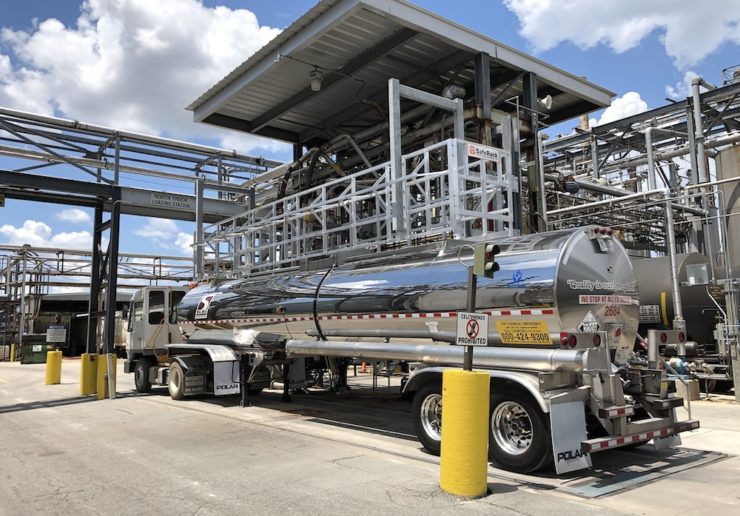
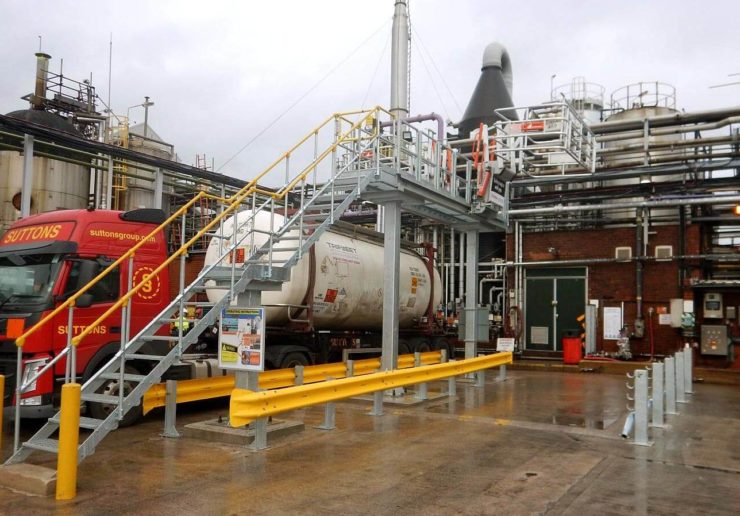
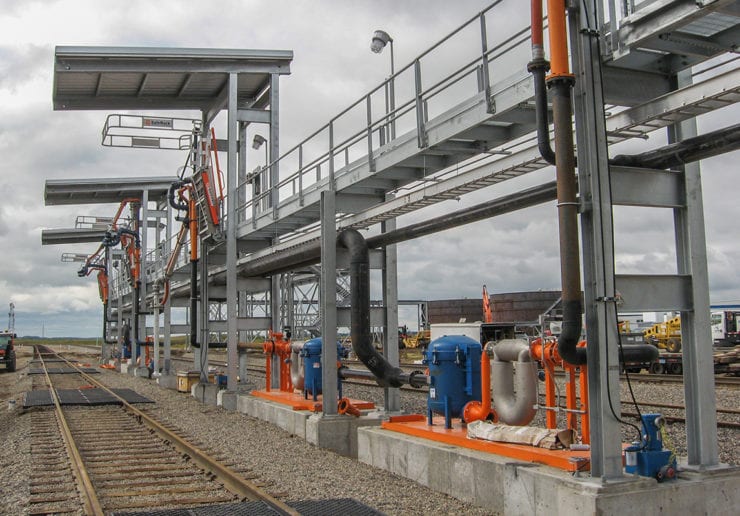
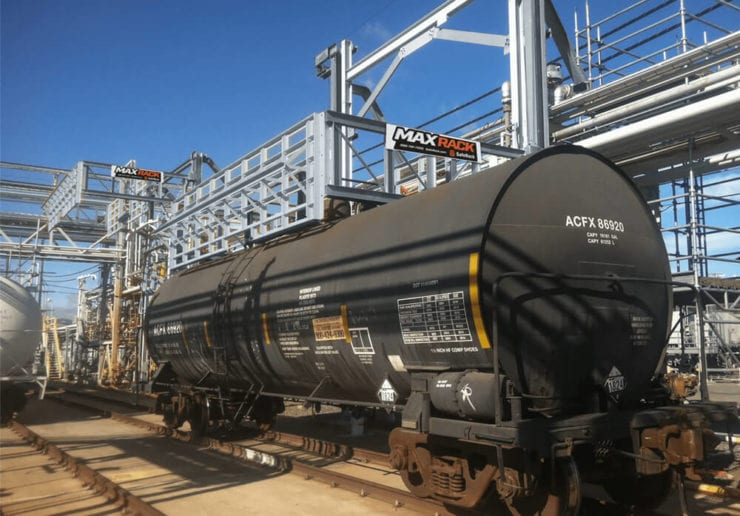

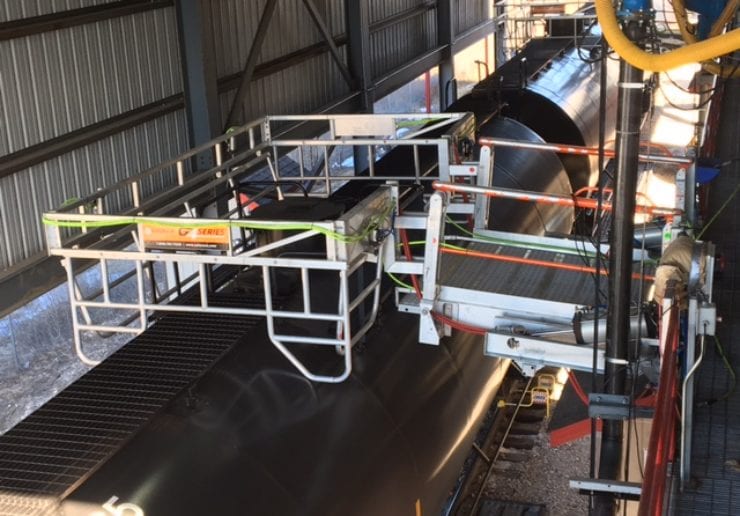

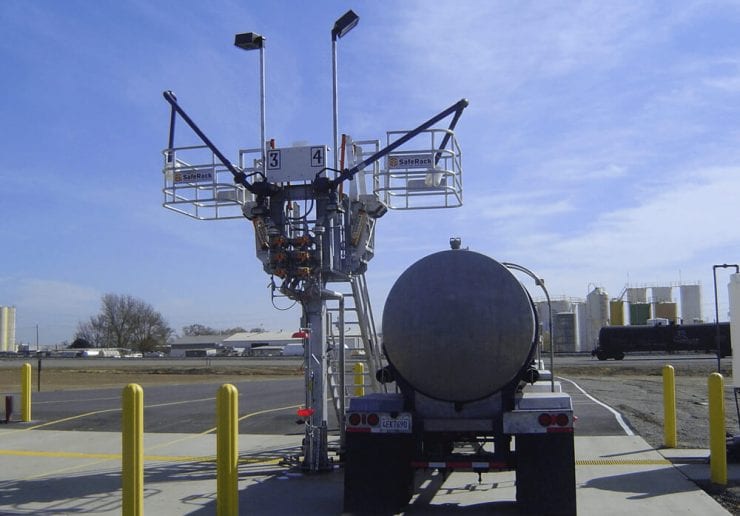
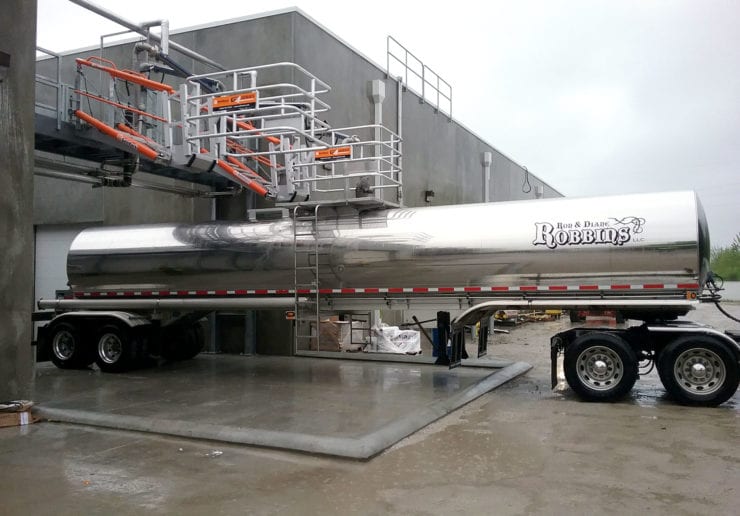
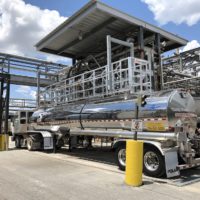
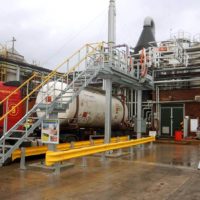
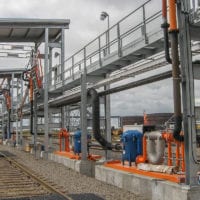
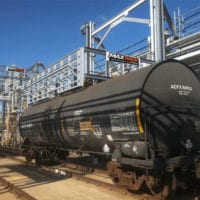
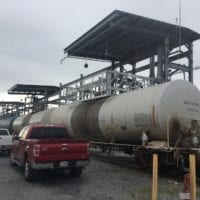
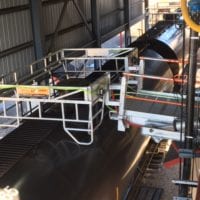

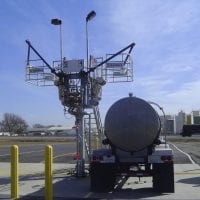


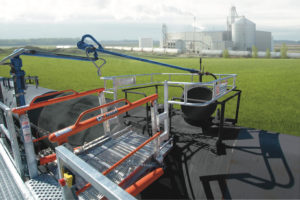
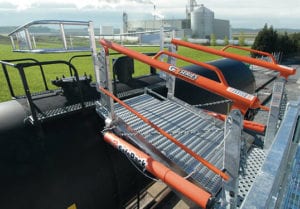
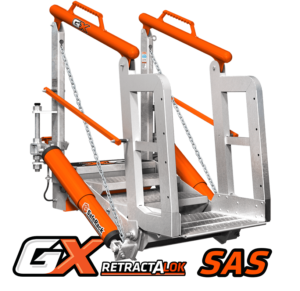
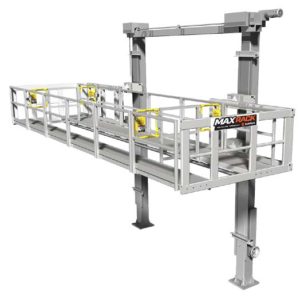 As an alternative to our two and four-rail safety cages, some customers prefer our MAXRack elevating safety cages. The ultimate fall prevention solution engineered to keep operators safe and productive. Designed for both trucks or railcars, and available in multiple cage lengths and widths. Safe, durable, and easy to use. MAXRack is built rock-solid with galvanized steel column supports and lifting arms (cages can be Aluminum, Galvanized, or Stainless Steel depending on application) Available in two power options – Pneumatic Air Drive and Electric Drive (Explosion and Non-Explosion Proof).
As an alternative to our two and four-rail safety cages, some customers prefer our MAXRack elevating safety cages. The ultimate fall prevention solution engineered to keep operators safe and productive. Designed for both trucks or railcars, and available in multiple cage lengths and widths. Safe, durable, and easy to use. MAXRack is built rock-solid with galvanized steel column supports and lifting arms (cages can be Aluminum, Galvanized, or Stainless Steel depending on application) Available in two power options – Pneumatic Air Drive and Electric Drive (Explosion and Non-Explosion Proof).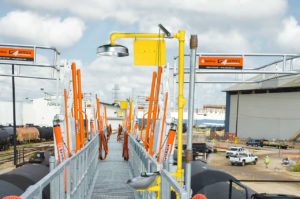
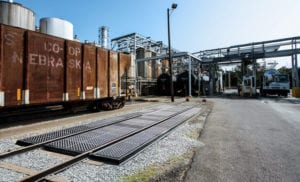
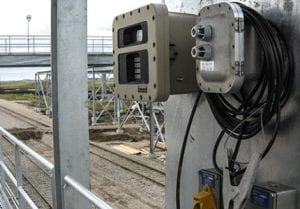
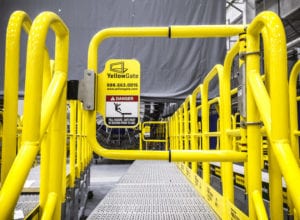
 YellowGate Safety Gates
YellowGate Safety Gates